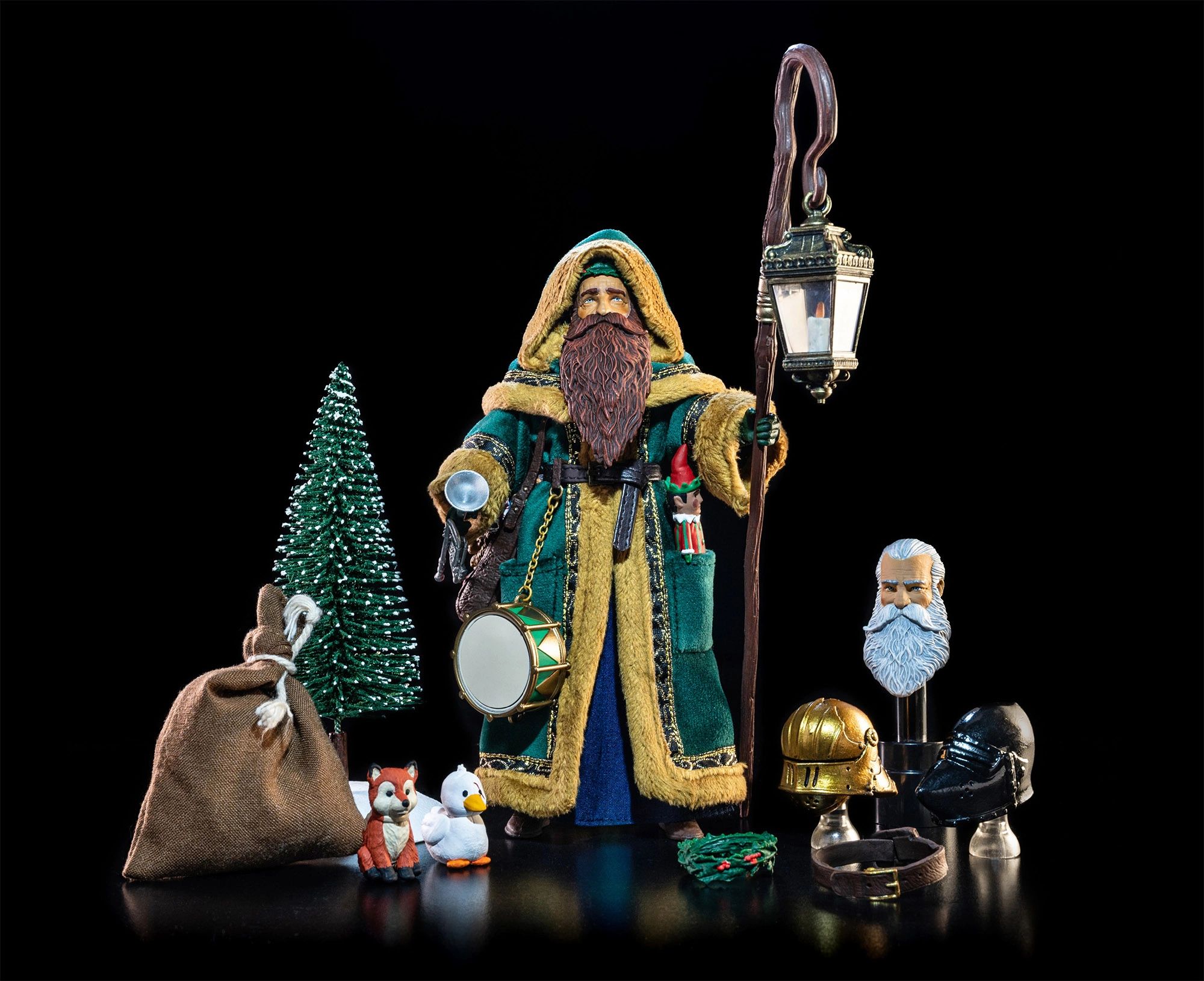Description
Saint Nicholas of Myra
Born on March 15, 270, the man known as Saint Nicholas of Myra was a Christian bishop of Greek descent from the maritime city of Myra in Asia Minor. A pious man who had multiple miracles attributed to him, he was also known as Nicholas the Wonderworker. Of course, much of what we know of this manÕs life is from writings made long after his death, and there are no doubt many elaborations in those tellings Ð appropriate for a man whose legend would one day morph into a jolly gift-giver who rides upon a crimson sleigh pulled forth by a team of flying reindeer!
One popular story of Saint Nicholas is that he saved three daughters whose family did not have the money for a dowry for them to be married. In these days, young woman in these circumstances had limited options in life, and so Saint Nicholas intervened by dropping bags of golden coins into the window of their home. With these generous gifts, he gave them the dowries they needed to secure suitable marriages. This story is the basis of the holiday tradition today where chocolate candies shaped like coins wrapped in golden foil are gifted to loved ones.
Nicholas was canonized by Pope Eugene IV on June 5th, 1446. At his canonization, Nicholas was credited with three hundred miracles, including three resurrections. Today, he is held as the patron saint of sailors, merchants, archers, repentant thieves, children, brewers, pawnbrokers, unmarried people, and students.
Besides the miraculous tales that led to his sainthood, the man who would become Saint Nicholas also had a reputation for generosity and surprise gift-giving. This, no doubt, had led to Saint Nicholas becoming known as ÒSaint NickÓ, or Santa Claus, in future tales!
The Holly King
We move now from a pious man of the cloth to old world traditions to see the roots of many of the legendary stories we know of Santa Claus take shape. One of these stories is in that of the endless battle between the Holly King and the Oak King.
The Holly King and Oak King are the personifications of Winter and Summer in various folklore and mythological traditions. These two beings engage in an endless struggle which reflects the seasonal cycles of the year. For ancient people, these stories were about light and dark, as well as crop renewal and growth. As the year turned, these stories were used to explain the warm days of Midsummer when the Oak King was at the height of his strength. Later, as the Autumn equinox approached, the Holly King began to emerge, his strength peaking during Midwinter. Of course, the cycle continues, and the Oak King is reborn, regains his full power at the Spring equinox, and perpetuates the endless cycle of the seasons and of death and rebirth.
In many of these legends, we see elements familiar to our commonly recognizable stories of Father Christmas today. The ancient character of the Holly King has evolved into the present-day Santa Claus, for stories tell of him wearing red, donning a sprig of holly in his hat, and driving a team of eight deer, an animal sacred to the Celtic Gods.
The Santa Claus we know in modern times clearly borrows not only from the Holly King, but also from many other mythological figures. Across the stories of Father Christmas we see characteristics of Saturn (Roman agricultural god), Cronos (Greek god, also known as Father Time), Morozko/Grandfather Frost (Russian winter god), Odin/Wotan (Scandinavian/Teutonic All-Father who rides the sky on an eight-legged horse), the Tomte (a Norse Land Spirit known for giving gifts to children at this time of year), and Thor (Norse sky god who rides the sky in a chariot drawn by goats). It is no wonder that the figure of Santa Claus is so well known and so beloved the world over, for his roots are multicultural, spanning across many stories that date back to the most ancient of times.





Reviews
There are no reviews yet.